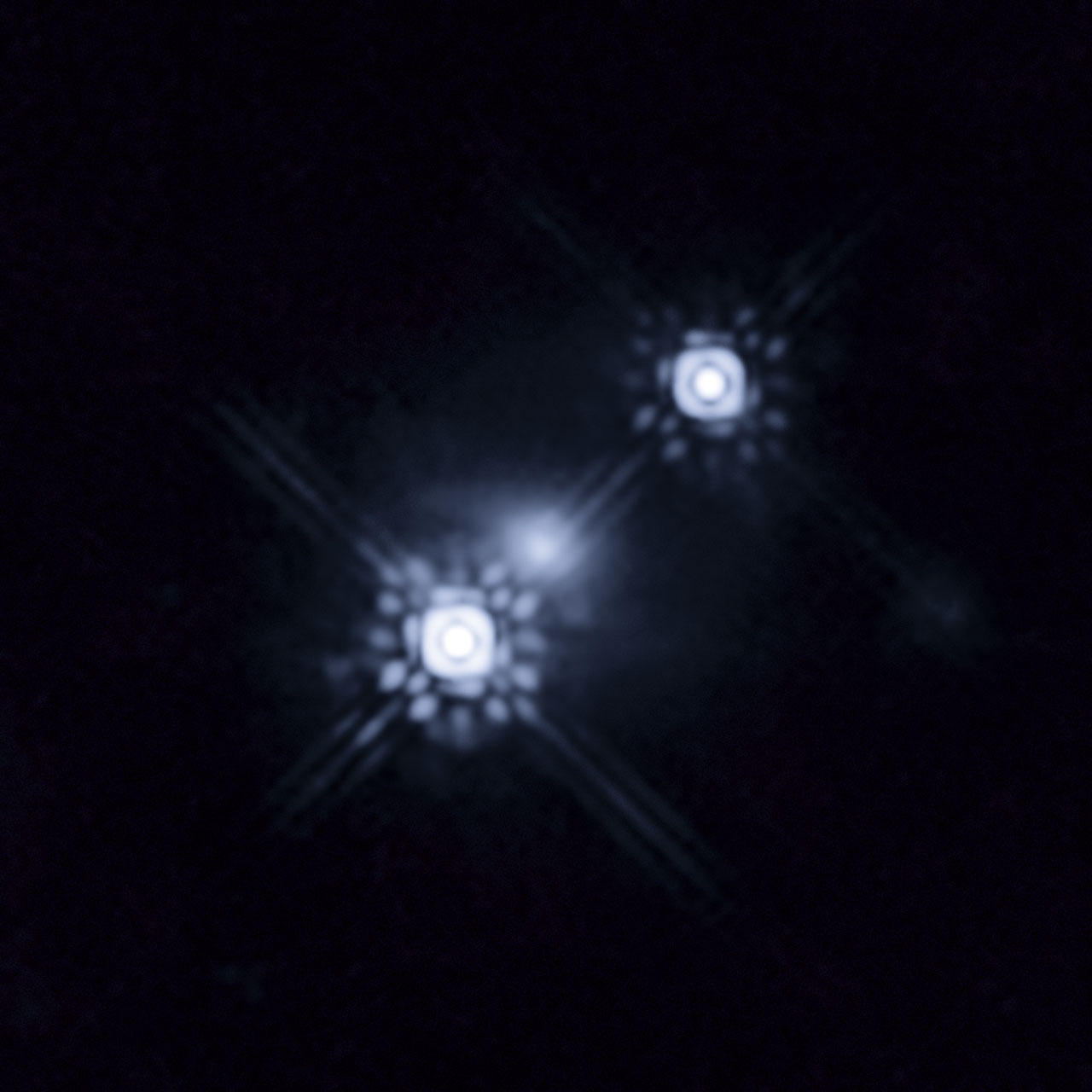Result: Researchers were able to directly measure the disk’s size and plot the temperature across different parts of the disc; a level of precision equivalent to spotting individual grains of sand on the surface of the Moon.
That minute apparent size of quasars has meant that most of our knowledge of their inner structure has been based on theoretical extrapolations, rather than direct observations.
Researchers got creative, using the stars in an intervening galaxy as a scanning microscope to probe features in the quasar’s disk that would otherwise be far too small to see. As these stars move across the light from the quasar, gravitational effects amplify the light from different parts of the quasar, giving detailed color information for a line that crosses through the accretion disk.
The team observed a group of distant quasars that are gravitationally lensed by the chance alignment of other galaxies in the foreground, producing several images of the quasar.
They spotted subtle differences in color between the images, and changes in color over the time the observations were carried out. Part of these color differences are caused by the properties of dust in the intervening galaxies: the light coming from each one of the lensed images has followed a different path through the galaxy, so that the various colors encapsulate information about the material within the galaxy. Measuring the way and extent to which the dust within the galaxies blocks light (known to astronomers as the extinction law) at such distances is itself an important result in the study.
“A quasar accretion disc has a typical size of a few light-days, or around 100 billion kilometres across, but they lie billions of light-years away. This means their apparent size when viewed from Earth is so small that we will probably never have a telescope powerful enough to see their structure directly,” explains Jose Muñoz, the lead scientist in this study.
For one of the quasars they studied, though, there were clear signs that stars in the intervening galaxy were passing through the path of the light from the quasar. The lens galaxy in which this phenomenon was observed is called [WKK93] G; the lensed quasar is called HE 1104-1805. Just as the gravitational effect due to the whole intervening galaxy can bend and amplify the quasar’s light, so can that of the stars within the intervening galaxy subtly bend and amplify the light from different parts of the accretion disc as they pass through the path of the quasar’s light.

Gravitationally lensed quasar HE 1104-1805. Credit: NASA, ESA and J.A. Muñoz (University of Valencia)
By recording the variation in color, the team were able to reconstruct the color profile across the accretion disk. This is important because the temperature of an accretion disc increases the closer it is to the black hole, and the colors emitted by the hot matter get bluer the hotter they are. This allowed the team to measure the diameter of the disc of hot matter, and plot how hot it is at different distances from the center.
They found that the disc is between four and eleven light-days across (approximately 100 to 300 billion kilometers). While this measurement shows large uncertainties, it is still a remarkably accurate measurement for a small object at such a great distance, and the method holds great potential for increased accuracy in the future.
Loading player...
A simulation of the view from Hubble, with the lens galaxy and bright lensed images of the quasar. It then rotates round to a view from the side, showing the relative positions of the objects and the path of the light beams as they are lensed by the galaxy. This is gravitational macrolensing. Note that the distances are shortened. The video then zooms into three different points: The accretion disc at the heart of the quasar, the point at which the quasar’s light passes through the lens galaxy, and the view from Earth’s orbit showing Hubble’s location. The beams of light coming from the accretion disc are bluer when they come from the centre of the disc, and redder when they come from the edges. This is because the center of the disc, the part closest to the black hole, is much hotter than the edge. As a star passes through the path of the light, beams of light from different parts of the disc get deflected towards the telescope at different times: note how the cross-hairs scanning across the disc of the quasar matches the colour that is deflected towards the telescope at any given time. This is gravitational microlensing. This method can be used to observe the color profile of the disc with unprecedented precision, comparable to being able to distinguish individual grains of sand on the surface of the Moon. Credit: NASA, ESA, L. Calçada
“This result is very relevant because it implies we are now able to obtain observational data on the structure of these systems, rather than relying on theory alone,” says Muñoz. “Quasars’ physical properties are not yet well understood. This new ability to obtain observational measurements is therefore opening a new window to help understand the nature of these objects.”
Article: “A study of gravitational lens chromaticity with the Hubble Space Telescope”, Astrophysical Journal.






Comments